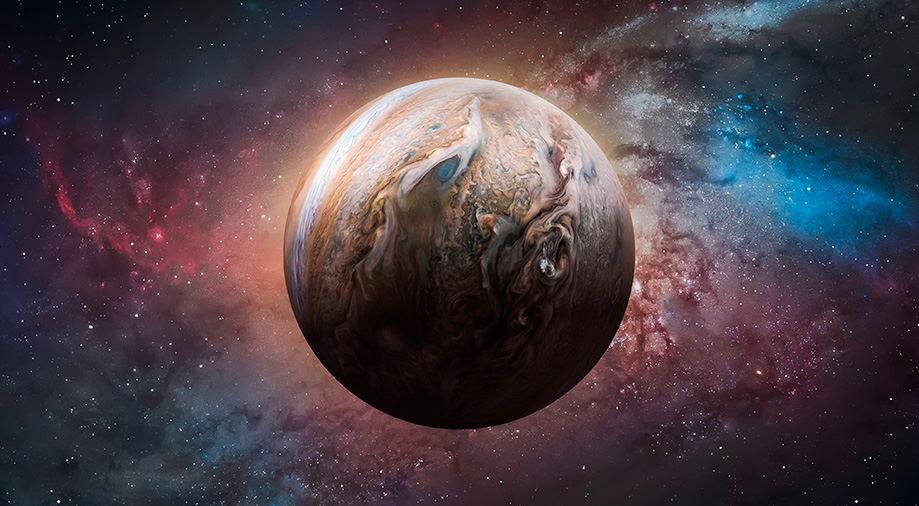Saturn is often called the most beautiful planet in the solar system. One can see why even through a small telescope. The planet’s famous rings give it a special charm found in no other celestial body in our solar system.
In this article, we’ll talk about how humanity has studied the sixth planet from the Sun, and how its spacecraft were able to uncover the secret of its famous rings.
Planet on the edge of the universe
Saturn is clearly visible in the sky with the naked eye, so its existence has been known since time immemorial. For many centuries, it was considered a planet on the edge of the universe, beyond which the realm of fixed stars began.
The first person to look at Saturn through a telescope was Galileo Galilei. He found what he saw greatly confusing. It turned out that the planet has “ears” – two strange spots on both sides of its disk. Unable to find a better explanation, Galileo suggested that Saturn had two very large moons. When the Italian astronomer looked at the planet again two years later, he was in for a real shock: the “moons” he saw had disappeared. Galileo was unable to find an explanation for this as long as he lived.
The mystery of Saturn’s missing companions was revealed only in 1655, when Christiaan Huygens observed the planet with a more powerful telescope. It turned out that Saturn was surrounded by rings. Unfortunately, Galileo’s telescope was too weak for him to be able to recognize what he was looking at as rings. In addition, we should not forget that scientists of that era did not know that planets could have such “decorations.” The rings’ subsequent “disappearance” is explained by the fact that from time to time, Saturn turns toward the Earth in such a way that its rings face us edge-on. During such periods, it is very difficult to see them even with a powerful telescope, to say nothing of the primitive instruments of the early 17th century.
In addition to the rings, Huygens discovered that Saturn had a moon, which would be called Titan. We now know it as the second-largest moon in the solar system. Titan is smaller than Ganymede, but larger than Mercury.

New discoveries followed as more powerful telescopes became available. It became clear that Saturn resembled Jupiter and is also a gas giant. It also turned out that there are several gaps in the rings of Saturn. A number of new moons of Saturn were also gradually discovered.
One of the most remarkable discoveries took place in 1899, when astronomers discovered the moon Phoebe. This would prove important for several reasons. Phoebe became the first moon in history to be discovered using photography. In addition, it was the first irregular moon to be discovered. It turned out that Phoebe moves in a retrograde orbit, which means that it was not formed along with Saturn, but was captured by its gravity. Before this discovery, astronomers had no evidence that such a scenario was possible.
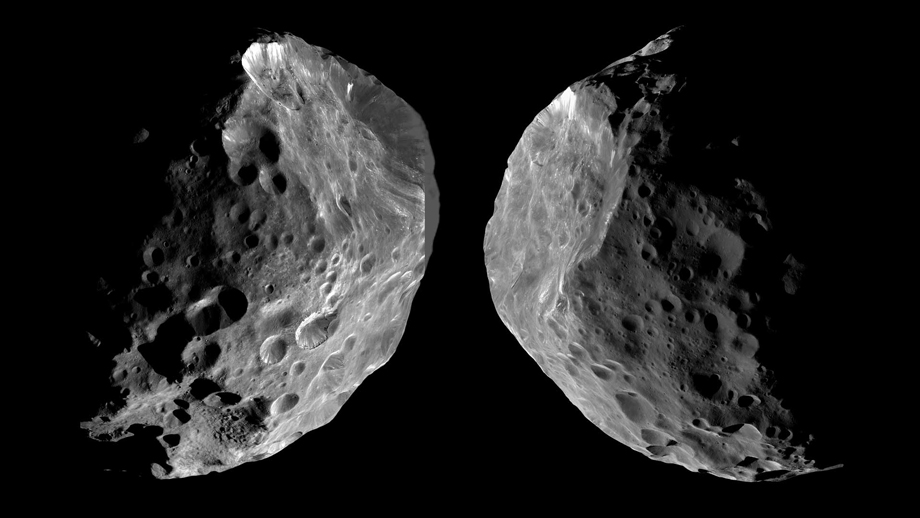
Photo: NASA
The next important discovery took place in 1944, when scientists discovered that Titan has a dense atmosphere. This is a unique feature not only among Saturn’s moons, but among all moons across our solar system.
The first attempt
These days, few people remember that the first spacecraft to visit Saturn was the probe Pioneer 11. This is due to the fact that all of the probe’s achievements were soon surpassed by the far more advanced Voyager devices. However, Pioneer 11 did indeed earn its name.
It is worth noting that the device was initially not planned to be sent to Saturn at all. Instead, Pioneer 11 was only supposed to study Jupiter. But after its launch, NASA decided to change the probe’s flight plan and use a gravity maneuver to direct it from Jupiter to Saturn.
Thus, NASA would try to kill two birds with one stone. Firstly, Pioneer 11 allowed the agency to practice its procedure for performing a gravity maneuver. Secondly, Pioneer 11 would fly through the plane of Saturn’s rings and ensure their navigability (there were fears that the rings could be filled with particles that could damage space technology). If Pioneer 11 had not survived its encounter with Saturn, NASA would have changed Voyager’s flight path.

Photo: NASA
Fortunately, everything worked out. Pioneer 11 successfully passed through the plane of Saturn’s rings, proving their navigability. The device probe faced another danger: it almost collided with a previously unknown moon of Saturn, which was later named Epimetheus. Pioneer 11 also captured a number of images, but due to their low resolution they did not help make any significant discoveries.
Voyager’s visit
Two years after Pioneer 11’s visit, the cavalry arrived at Saturn in the form of a pair of Voyager probes. They had more powerful energy sources and advanced scientific instruments, so big discoveries were not long in coming.
Voyager images showed that the rings of the sixth planet were much more complex than previously thought, and in fact consist of hundreds of small rings. The Voyager probes also discovered the so-called shepherd moons: small moons whose gravity affects the rings and hold their particles together.

Photo: NASA
The probes carried out a detailed survey of all of Saturn’s main moons, and also discovered several previously unknown moons. It turned out that, thanks to its large crater, the moon Mimas resembles the Death Star from Star Wars, while the hemispheres of Iapetus have radically different colors. It also turned out that the moons Epimetheus and Janus change their orbits from time to time. This is unique among the moons in our solar system. They were most likely a single body, which subsequently split into two large fragments in the distant past.

Photo: NASA
Scientists had very high hopes for images of Titan. By that time, it was already known that the moon’s atmosphere was too cold to support any sort of life forms familiar to us. However, everyone was very interested in what lay on the surface. Unfortunately, when astronomers received long-awaited images of Titan, they were greatly disappointed to discover that, due to hydrocarbon haze, its atmosphere was completely opaque in the visible spectrum. As a result, the Voyager probes were never able to find out what exactly was hiding below.
However, Voyager data pointed to a very intriguing possibility. It turns out that the temperature on the surface of Titan is close to the triple point, at which a substance can simultaneously exist in a liquid, solid and gaseous state. But while the main matter on Earth is water, on Titan the substance is methane.


Photo: NASA
Visits by space envoys also made it possible to establish Saturn’s size and mass. With a slightly smaller diameter than Jupiter of 116,000 km, Saturn’s mass is only 95 times that of the Earth. It is thus the least dense planet in the solar system. Saturn’s average density is only 0.68 g/cm3, which is less than the density of water.
The Voyager mission provided many answers, but it also raised a number of new questions. How exactly were Saturn’s rings formed, and how old are they? Why are so many of Saturn’s moons so strange? And finally, what lies hidden on the surface of Titan? Do methane rivers really flow there, or is it just a beautiful fantasy?
There was only one way to get answers to all these questions. A new mission would have to be sent to Saturn that would enter a permanent orbit around the planet, with instruments powerful enough to penetrate Titan’s hydrocarbon haze and discover what lay below.
Cassini’s triumph
Development of the new mission to Saturn began in the first half of the 1980s. It was designated Cassini. Due to the technical complexity and scale of the tasks involved, the project was a collaboration between NASA and the ESA from the very beginning. The American side was responsible for the construction of the orbiter, while the Europeans took over the creation of the probe that was supposed to land on Titan, which they named Huygens.
Cassini turned out to be quite a problematic project. The creation of the device was marred by cost overruns, due to which it was almost deprived of funding several times. There were also disputes between NASA and ESA, as well as protests from environmental activists who opposed the use of a nuclear power source on board. However, in November 1997, Cassini made its departure from Earth. Next, the device performed a series of gravitational maneuvers that directed it towards Saturn, where it ultimately arrived in 2004.

Image: NASA
Although Cassini’s creation involved considerabel controversy, the device carried out its scientific mission almost flawlessly, becoming a role model for designers of future space missions. One of the first important discoveries was made when Cassini was just entering orbit around Saturn. The device made a close flyby of Phoebe and determined that it was not an asteroid captured by Saturn’s gravity, but an object that originally was formed in the Kuiper belt.
At the end of 2004, the Huygens probe separated from Cassini. It performed its historic landing on Titan on January 14, 2005. The images transmitted by the probe showed a complex topography with areas resembling river beds and coastlines. In photographs from the surface, one could see rounded stones with traces of exposure to liquid. In addition, Huygens made the first-ever recording of the sounds of Titan’s atmosphere.
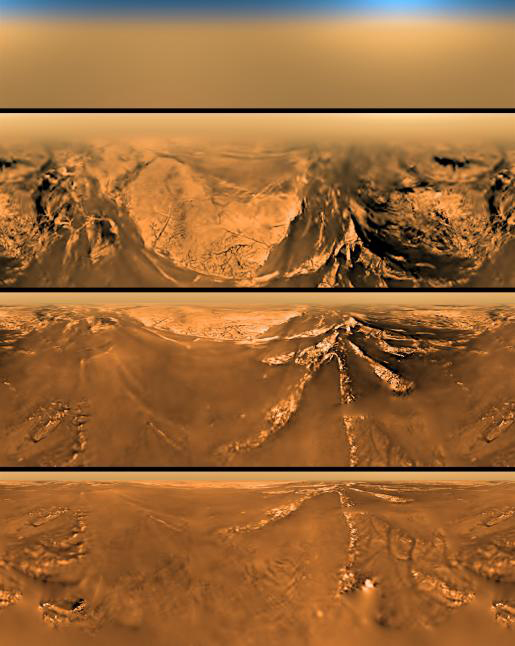
Photo: NASA
In subsequent years, Cassini performed numerous close flybys of Titan. Thanks to its radar and infrared camera, the spacecraft was able to map most of the moon’s surface. Cassini data confirmed scientists’ wildest assumptions. Titan actually has liquid in the form of a mixture of methane and ethane. It has rains and rivers, as well as a number of hydrocarbon lakes concentrated around the North Pole, the largest of which is comparable in area to the Caspian Sea. Cassini’s data also indicated that the depths of Titan may contain an ocean consisting of water, ammonia, and various salts.

Image: NASA
The second major sensation was Enceladus. Before Cassini, this 500-kilometer moon attracted little attention from scientists. But Cassini’s first flyby changed everything. It turned out that Enceladus is one of the most geologically active bodies in the solar system. Its south pole is densely peppered with geysers that constantly spit out water into space. They are so active that they have formed an entire ring around Saturn.
The water emitted by Enceladus’s geysers comes from an ocean hidden an estimated 10 km within the moon. During its mission, Cassini flew through the ejecta several times, analyzing its chemical composition. It was able to identify salts, organic compounds, and substances indicating that active hydrothermal processes were taking place in the moon’s ocean. As a result, Enceladus is now considered one of the most promising locations in the solar system for the search for extraterrestrial life.
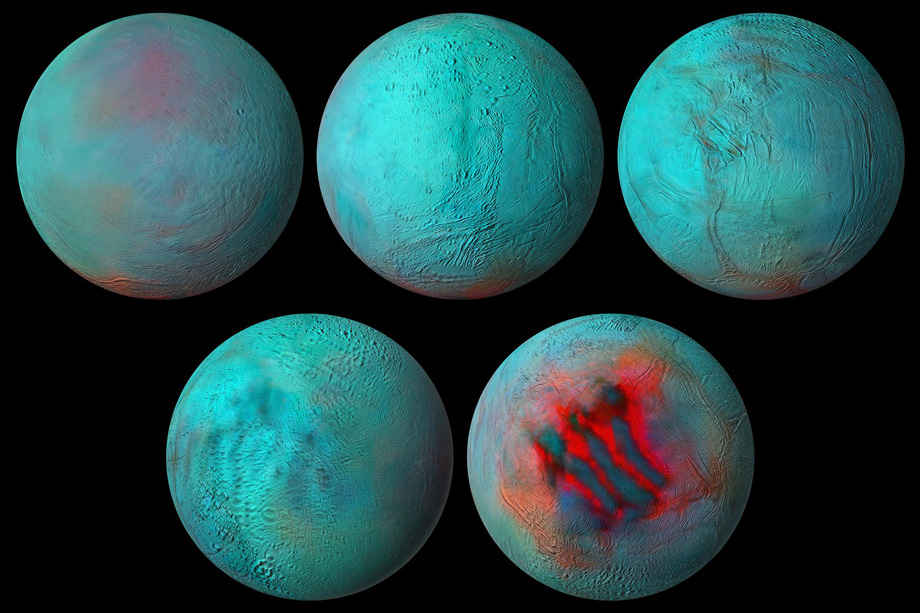
Photo: NASA
An answer was also found to the riddle of Iapetus’s two hemispheres. It turned out that the dramatic bifurcation of the moon is caused by dust knocked out from the surface of Saturn’s other moons. This dust settles on one half of Iapetus, which is why it heats up more than the other areas. As a result, the ice on the moon evaporates and condenses where the surface temperature is lower.
Saturn itself also presented many surprises. Cassini photographed an extremely unusual hexagonal vortex at the planet’s North Pole. Its diameter was 25,000 km, which is approximately twice the diameter of the Earth. The hexagon even periodically changes its color. When summer comes to Saturn’s Northern Hemisphere, the vortex changes from dark blue to golden. Scientists attribute this to an increase in the intensity of ultraviolet radiation triggered by photochemical reactions in the atmosphere, which change the color of the storm.
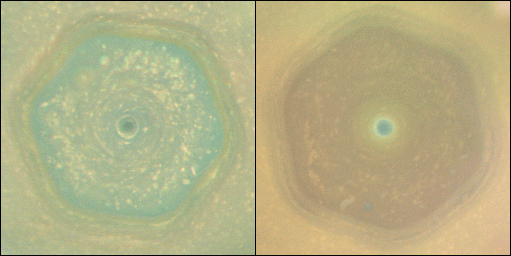
Photo: NASA
Of course, Cassini did not ignore Saturn’s rings. Over its years of operation, the probe took many amazing photographs, showing that the rings are even more complex than previously thought. Under the influence of the gravity of the planet’s moon’s, very bizarre structures regularly appear within the rings, like vortices, waves, kinks, and loops.
It was Cassini that was able to finally answer the age-old question of how old Saturn’s rings are. For many years, astronomers had two main hypotheses. According to the first, the rings were the same age as the planet itself and were formed simultaneously with it. The second explanation was that the rings were much younger than Saturn and resulted from the destruction of one of its icy moons.
Before Cassini’s visit, most astronomers were inclined towards the first hypothesis. But Cassini proved them wrong. The device was able for the first time to determine the mass of the rings, and also to detect ice rain consisting of matter from the rings falling on Saturn.

Photo: NASA
By calculating the rate of matter loss, astronomers were able to determine the approximate age of Saturn’s rings, which is no older than 400 million years. That is, the rings of Saturn may well be the same age as dinosaurs. As for how long they have left, astronomers estimate that the rings will remain for several hundred million more years.
The Cassini mission ended in 2017. To avoid the tiny but highly dangerous possibility of the probe colliding with one of Saturn’s moons and introducing terrestrial microbes to its surface, NASA decided to send the station into the atmosphere of the gas giant. This happened on September 15, 2017.
Even though six years have passed since Cassini made its final fall, its mission is to a certain extent still ongoing. During its study of Saturn, the device transmitted to Earth such an impressive amount of data that it astronomers will still need many, many years to analyze it all.
A drone for Titan
At the moment, there is not a single functioning spacecraft in the Saturn system. That should change in the mid-2030s when the Dragonfly mission arrives. Its goal is to land an aircraft on Titan.

Photo: Johns Hopkins APL
Dragonfly is being created by the Applied Physics Laboratory at Johns Hopkins University. Structurally, it consists of a 450-kilogram octocopter equipped with four double propellers, which will allow the probe to move in Titan’s atmosphere at a speed of about 36 km/h and rise to an altitude of up to 8 km. The drone will be powered by a radioisotope power source. Thus, it will not depend on local weather to operate (the average temperature on the surface of the satellite is –180°C).
The device’s main task will be to search for complex organic molecules and assess Titan’s overall suitability for life. The drone will be able to collect samples from the Titanian surface and conduct chemical analyses. Dragonfly will also study the moon’s topography, atmosphere, and hydrocarbon reservoirs.
Currently, Dragonfly is scheduled to launch in 2027 and arrive at Titan in 2034. The Shangri-La region, located near Titan’s equator, was chosen as the drone’s landing site. It is a vast plain covered with fairly high dunes. It is believed that they consist of grains of complex hydrocarbons deposited from the moon’s atmosphere.
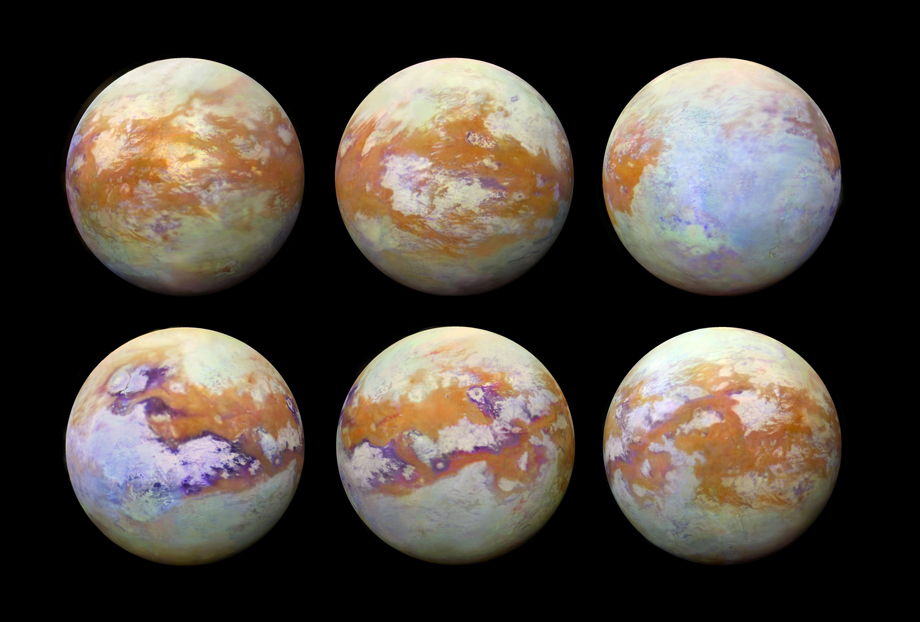
Photo: NASA
To date, Dragonfly is the only officially approved mission set to go to Saturn in the coming years, but there are many more projects that could eventually get the green light. Most of them are focused on astrobiological research on Enceladus. The presence of geysers on this moon opens up a rather tempting opportunity to study their emissions for signs of life without the need to land on the surface itself and then drill through the ice to get to the ocean.
Of course, Cassini has already studied the geyser emissions from Enceladus. But it is worth understanding that its designers did not plan for this discovery, and the probe’s instruments were not designed for astrobiological research. A specialized mission will be able to conduct a detailed analysis of water from Enceladus’s ocean and tell us about its suitability for life.
There is also a project within NASA to send a probe to Saturn, which will descend into its atmosphere and conduct a series of specialized studies. It is currently one of the candidates to receive funding under the new New Frontiers program. If the atmospheric probe project is approved, it could launch in the middle of the next decade and reach Saturn sometime in the early 2040s.




